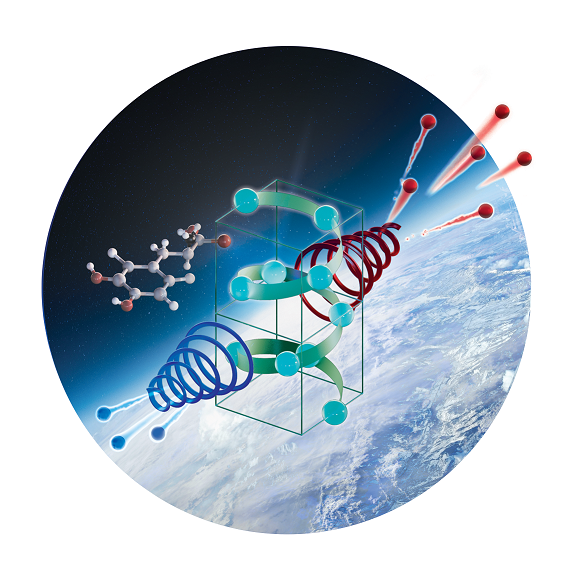A research group led by Prof. LI Guowei at the Ningbo Institute of Materials Technology and Engineering (NIMTE) of the Chinese Academy of Sciences (CAS), has observed a new driving force for the recognition of chiral molecules with different configurations. The study was published in Angewandte Chemie International Edition.
Chirality and symmetry are one of the basic principles of nature, which are widespread in architecture, art, and painting. In addition, chirality is also closely bonded with life sciences, medicine, materials science, and even the origin of life. For example, more than 70% of the top 20 major drugs available in the market around the world are chiral drugs, and only certain chiral drug molecules have therapeutic effects.
Therefore, understanding the principle and origin of chirality in nature, and then synthesizing chiral molecules controllably is not only vital for human health but also provides important clues for answering the origin of life.
When exploring the driving force of chiral molecule recognition and the selectivity of chemical reaction, the regulation of electronic structure and topological structure based on inorganic crystals has drawn wide attention. However, a question still lingers: whether there is a driving force that can achieve chiral molecule recognition or reaction without any special modification, but only by the intrinsic physical properties of crystal materials?
By controlling the chemical composition of seed crystals, two PdGa single crystals with opposite chirality were grown in a self-flux technique. The handedness was indexed by Laue diffraction patterns, which also indicates the exposure of (111) crystal surface.
Both topological chiral crystals have the same B20 crystal structure. While Pd (Ga) atoms are helically stacked along the [111] polar direction with reversed handedness of helices, endowing this material with abundant quantum properties.
L-DOPA is an effective medicine to treat Parkinson's syndrome, and thus, it is crucial to distinguish DOPA molecules with different configurations. The oxidation of DOPA enantiomers is strongly dependent on the chirality of the PdGa crystals. The oxidation of L-DOPA at the surface of PdGa-A crystal is more favorable than D-DOPA, while PdGa-B crystal prefers the oxidation of D-DOPA.
Results of the density functional theory (DFT) calculation suggested that strongly chiral-dependent molecular oxidation behaviors originate from the intrinsic orbital-angular momentum (OAM) polarization. When interacting with molecules with different configurations, the crystals with opposite orbital polarization direction exhibited a difference in electron transfer probability and bonding ability, leading to the difference in the subsequent oxidation behaviors.
In this work, the enantioselective recognition for chiral molecules was achieved on pure chiral crystals without any surface modification. A new mechanism for driving the enantioselective reactions in inorganic solids was proposed based on the results. More importantly, the OAM polarization could be coupled with vortex electron beams and polarized light, which provides one possible explanation for the appearance of the first chiral monomers in nature.
This work was financially supported by the National Natural Science Foundation of China (No. 52271194), Ningbo Yongjiang Talent Introduction Programme (No. 2022A-090-G), etc.

Fig. The B20 chiral crystals for the recognition of chiral molecules with different configurations (Image by NIMTE).
Contact
LI Guowei
Ningbo Institute of Materials Technology and Engineering
Email: liguowei@nimte.ac.cn

